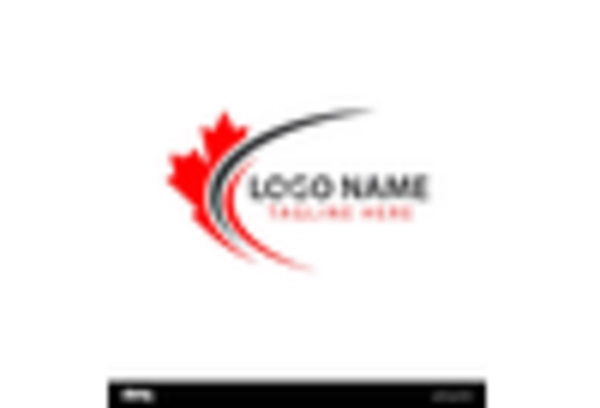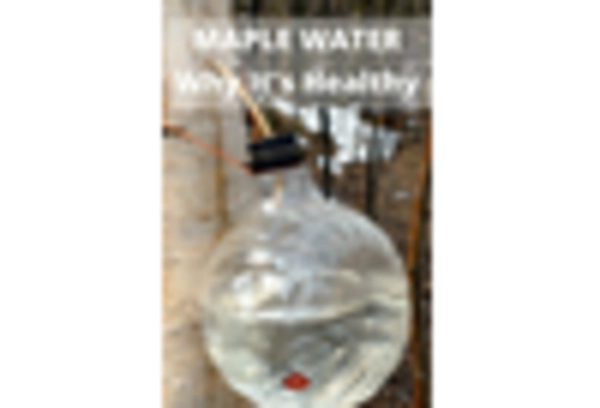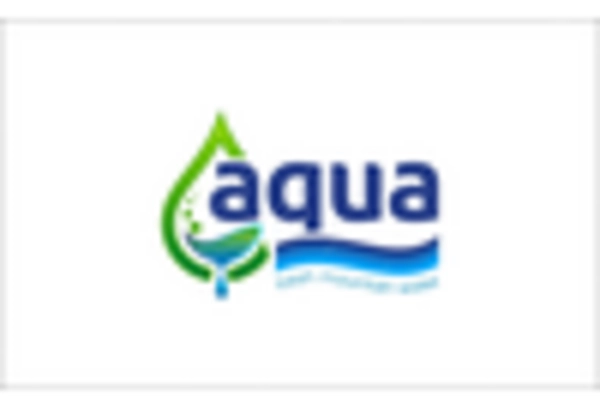Innovative Marketing Strategies
The Maple Water Market is witnessing a transformation in marketing strategies, with brands increasingly leveraging social media and influencer partnerships to reach target audiences. Innovative campaigns that highlight the unique benefits of maple water, such as its low calorie content and natural electrolytes, are gaining traction. This shift in marketing approach is particularly effective among younger consumers who are more likely to engage with brands that utilize digital platforms. As a result, the Maple Water Market is likely to see an expansion in its customer base, driven by effective storytelling and brand engagement. The integration of technology in marketing efforts may also enhance consumer awareness and education about the health benefits of maple water.
Expansion of Distribution Channels
The Maple Water Market is experiencing an expansion of distribution channels, which plays a crucial role in increasing product accessibility. Retailers are increasingly recognizing the potential of maple water, leading to its presence in supermarkets, health food stores, and online platforms. This diversification of distribution channels allows consumers to easily access maple water products, thereby driving sales growth. Additionally, partnerships with e-commerce platforms enable brands to reach a wider audience, catering to the growing trend of online shopping. As distribution networks continue to evolve, the Maple Water Market is likely to see enhanced visibility and availability, contributing to its overall market expansion.
Rising Demand for Natural Beverages
The Maple Water Market experiences a notable increase in demand for natural beverages, driven by consumers' growing preference for healthier alternatives to sugary drinks. This trend is reflected in the rising sales of maple water, which is perceived as a refreshing and nutritious option. In recent years, the market has seen a compound annual growth rate of approximately 20%, indicating a robust interest in products that offer hydration without artificial additives. As consumers become more health-conscious, the Maple Water Market is likely to benefit from this shift, with an increasing number of brands entering the market to cater to this demand. The emphasis on natural ingredients aligns with broader consumer trends favoring transparency and authenticity in food and beverage choices.
Health Benefits and Nutritional Value
The Maple Water Market is significantly influenced by the growing awareness of health benefits associated with maple water consumption. Rich in antioxidants, vitamins, and minerals, maple water is increasingly recognized for its potential to support hydration and overall wellness. Research indicates that maple water contains essential nutrients such as potassium and calcium, which are vital for maintaining bodily functions. As consumers become more informed about the nutritional value of their beverage choices, the demand for maple water is expected to rise. This trend is further supported by health professionals who advocate for natural hydration options, positioning maple water as a desirable alternative in the beverage market.
Sustainability and Eco-Friendly Practices
Sustainability has emerged as a pivotal driver within the Maple Water Market, as consumers increasingly prioritize eco-friendly products. The production of maple water is often associated with sustainable harvesting practices, which appeal to environmentally conscious consumers. This alignment with sustainability not only enhances brand loyalty but also attracts new customers who are willing to pay a premium for products that reflect their values. Furthermore, the Maple Water Market is witnessing a rise in brands that emphasize their commitment to reducing carbon footprints and utilizing recyclable packaging. This focus on sustainability is expected to continue influencing purchasing decisions, as consumers seek to support brands that contribute positively to the environment.


















Leave a Comment